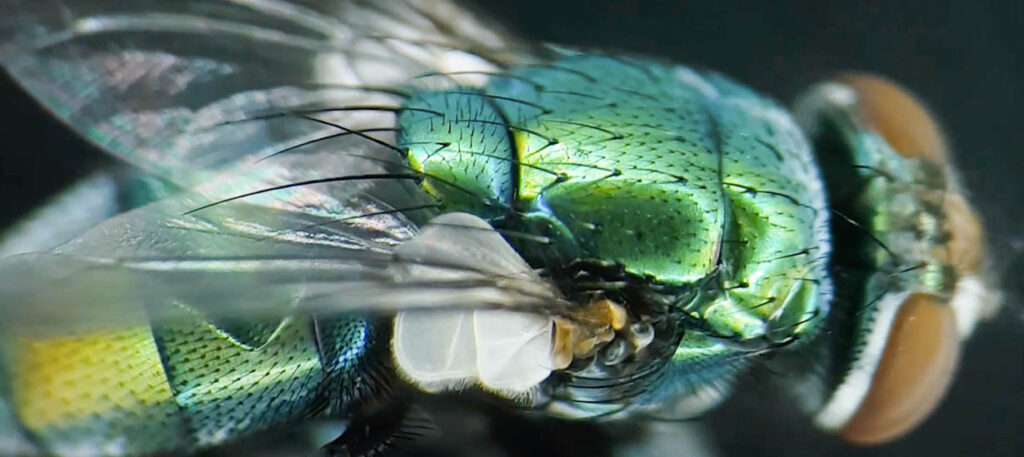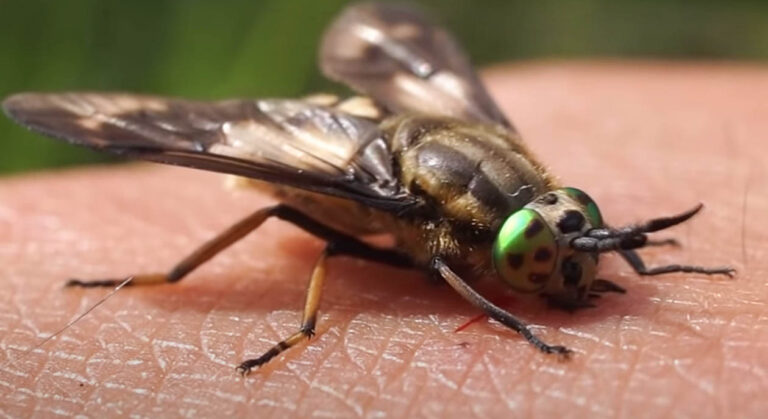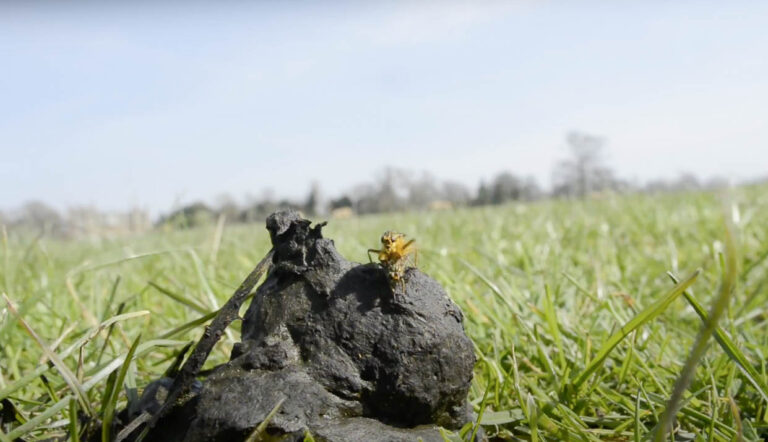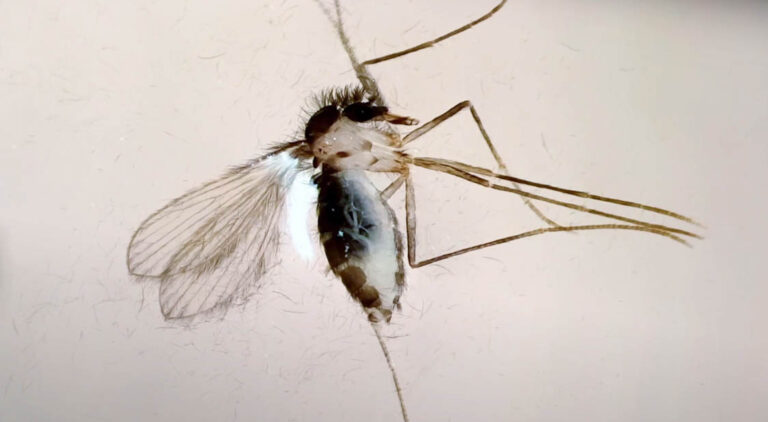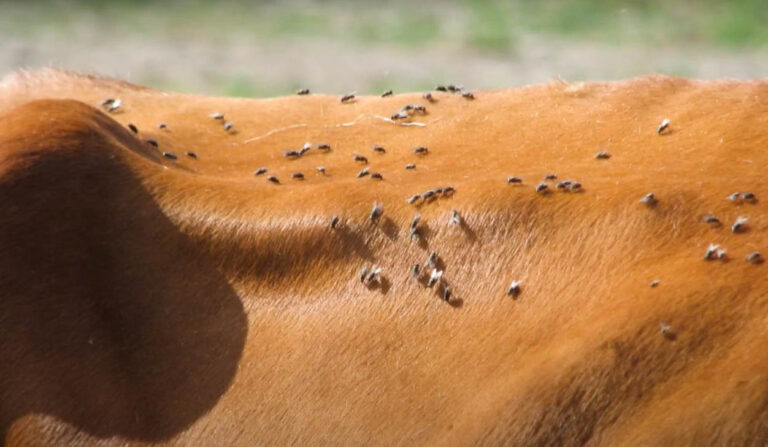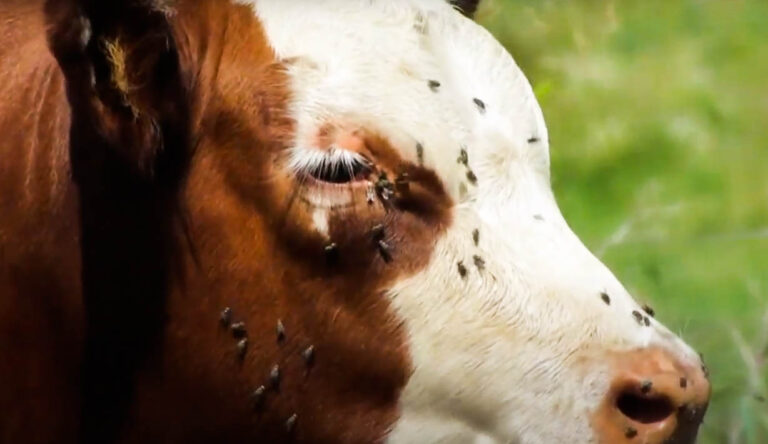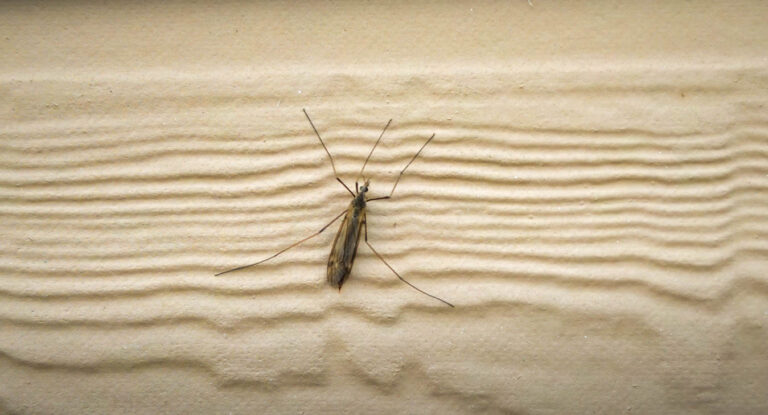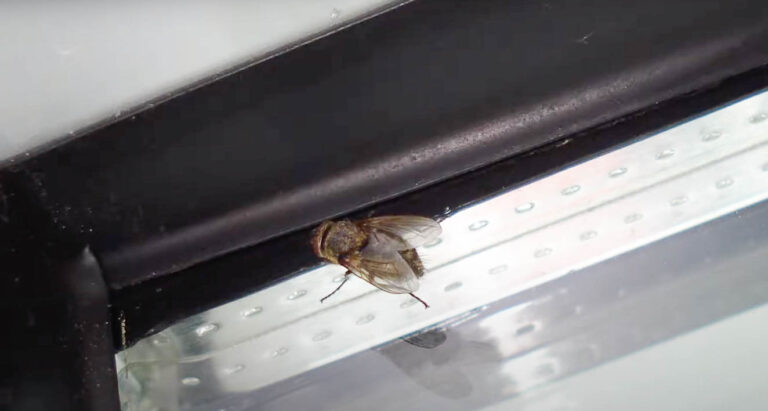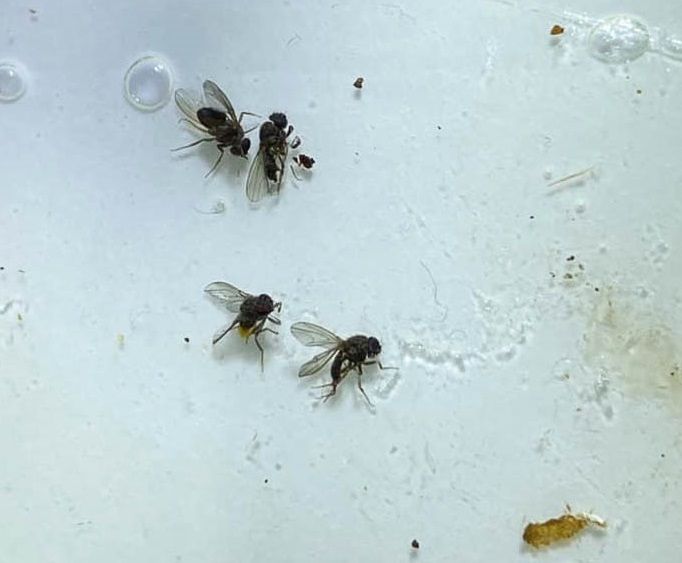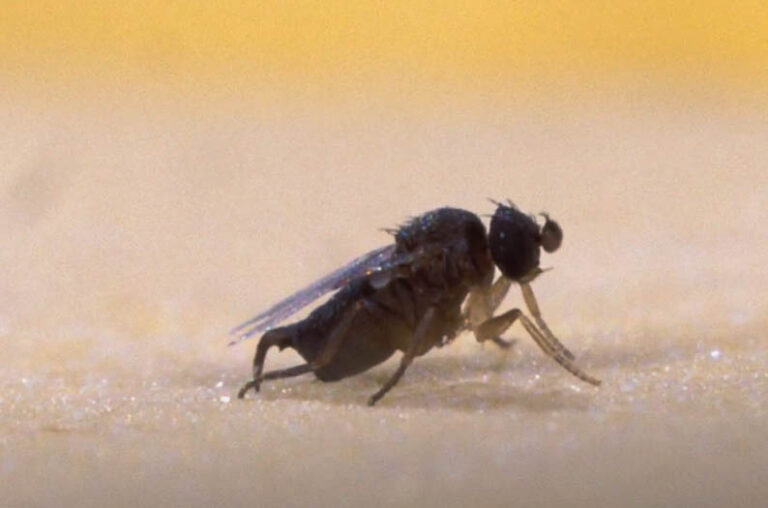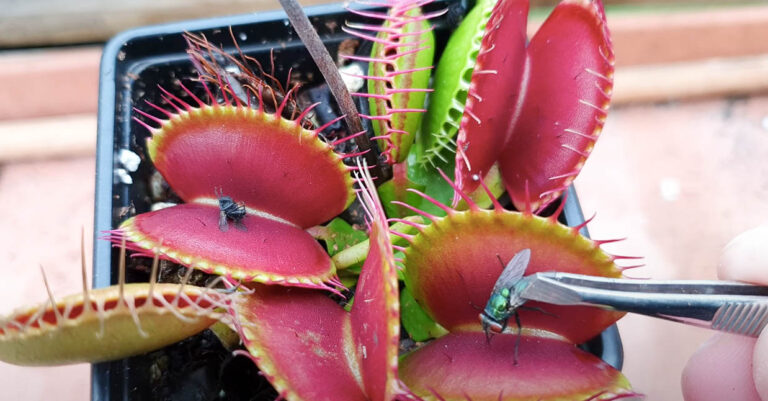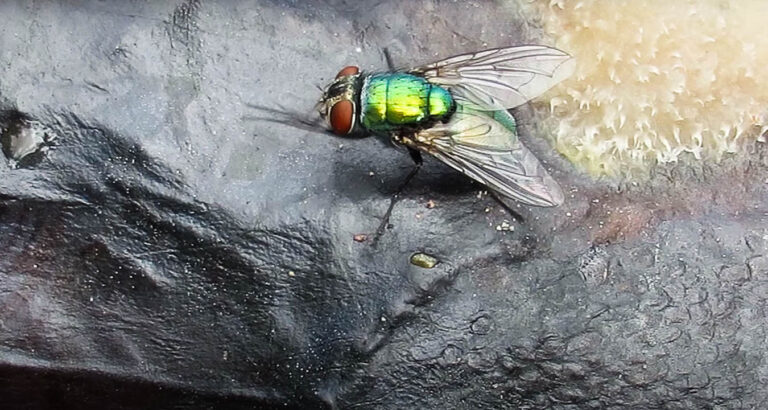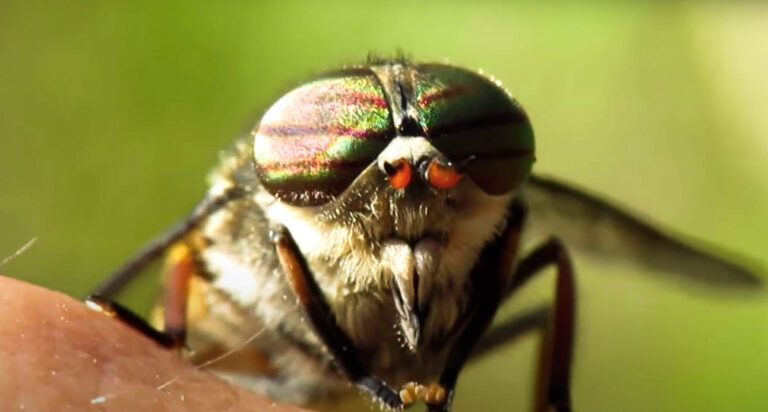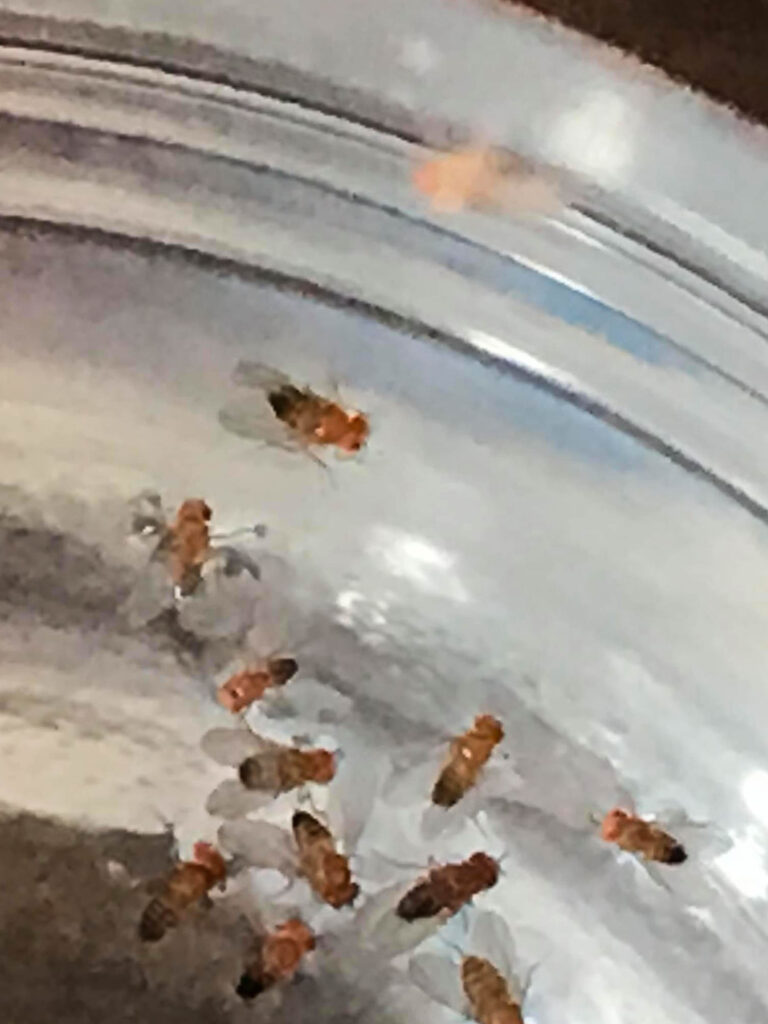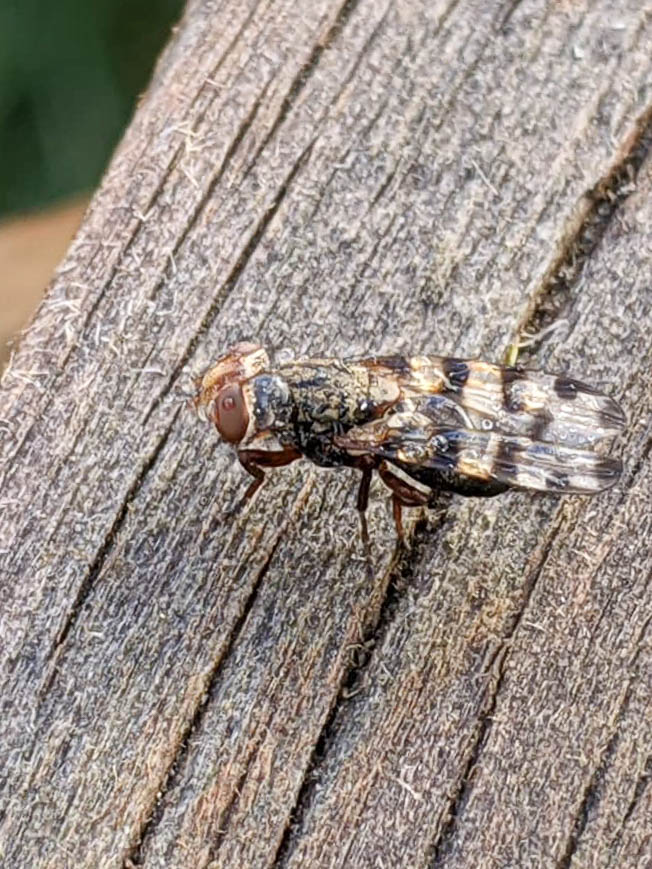About the Bottle Fly
Appearance
Blowflies (Calliphoridae), also known as carrion flies, are renowned for their bright and shiny appearance. Their hard exoskeleton is colored metallic blue, green, or black. From their heads, sprout two antennae, consisting of three segments. Alongside the antennae, are two large bright red compound eyes. From head to tail, blowflies average around 8 to 10 mm (0.3 to 0.4 in) in length, making them slightly larger than the common housefly. There are many species within the blowfly family. As such, the arrangement of bristles on the body is used to differentiate between the different species. Located on their back, and attached to the thorax, is a pair of wings. Blowflies are notoriously loud in flight, due to the movement of their wings and bodies. They also have six legs, typical of all insects, which attach at the thorax.
Behavior
Blowflies eat a large variety of foods. They are known to be occasional pollinators, being particularly drawn to flowers that smell of rotting meat. As such, they’re also attracted to rotting food of all kinds, which often leads them into contact with humans. If they detect the scent of organic or other rotting substances, they will enter a home. As a rule, blowflies are not dangerous to humans, as they do not bite or sting. However, they are a significant repository of hazardous bacteria and pathogens. Therefore, they can pass on diseases. In animals, they can lay eggs in open wounds that are left to fester. The primary pathogens that blowflies contain or infections they can cause are salmonellosis, dysentery, cholera, parasitic worms, and more. The only time to be particularly aware of blowflies is when cooking outdoors. Blowflies will be attracted to food products, and this is a prime point for contagion.

Life cycle
Like horseflies, blowfly females are picky about their food before laying eggs. However, unlike horseflies, they aren’t bloodsuckers. Instead, the most promising theory is that the females dine on carrion to stock up on protein. Then, the carrion can serve as a place to deposit their eggs. The eggs are yellow or white in color, being around 1.5 mm in length, and have been compared with rice grains. As mentioned, female blowflies will lay their eggs in a variety of locations, from a dead carcass to an open wound. There have even been reports of them laying eggs in an animal’s eyes, ears, or nose. They can fly an incredible 12 miles in search of a suitable carcass to lay their eggs. In a single batch, a female will lay 150 to 200 eggs, laying a total of around 2,000 eggs in a lifetime. Once they’ve been laid, blowfly eggs only take 24-45 hours to hatch. The larval stage takes only a few days. During this time, the larvae dine on their surrounding environment, breaking down the flesh. As they grow, they shed their exoskeleton emerging larger than before. After they have reached a specific size, their exoskeleton hardens and turns brown. This is the pupal stage. During this period, the larvae undergo metamorphosis into an adult blowfly. The process takes seven to fourteen days.
Habitat
Blowflies prefer to be outside, and will only venture inside if they detect decomposing food. They are found throughout the world, in all geographical localities. However, they are particularly common in temperate and tropical areas. They are most numerous during the summer months and will seek warmth and shelter during the winter. As mentioned, they will often breed in any garbage that has been left outside. If not adequately sealed, people often arrive to find it brimming with maggots. However, they will also breed and live in compost piles or grass clippings.
